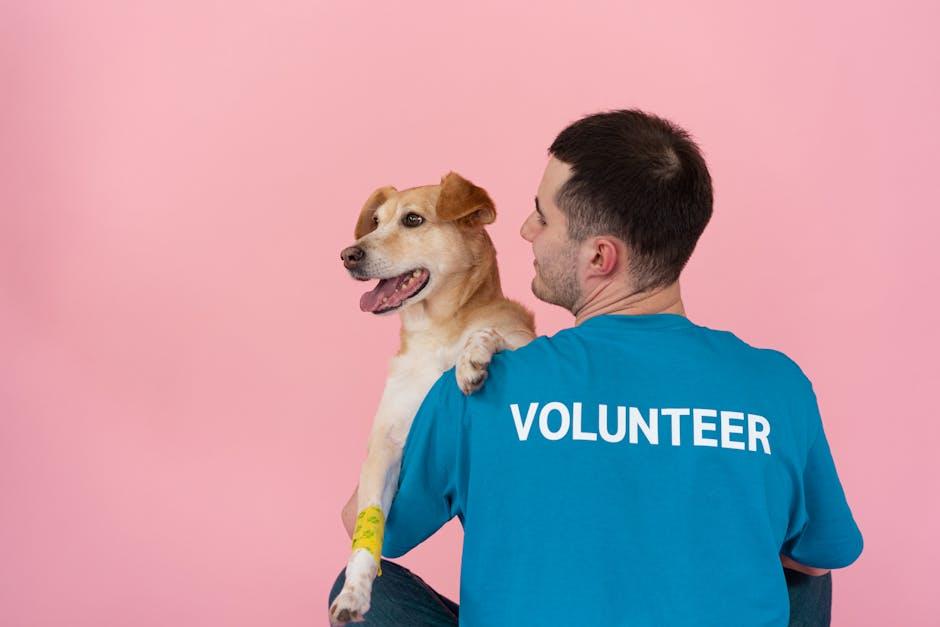In today’s world, the choice to bring a pet into your home often comes with a significant decision: to adopt a pets-on-the-go-a-risky-adventure/” title=”Unchipped Pets on the Go: A Risky Adventure”>rescue animal or purchase one from a breeder or pet store. Both options offer the joy and companionship that only a pet can provide, but they also come with their own sets of behavioral traits and challenges. Understanding these differences is crucial for prospective pet owners, as it helps ensure a harmonious and fulfilling relationship for both the pet and the family. This article aims to guide you through the intricacies of rescue pets, shedding light on their unique behavioral characteristics and comparing them with those of pets that are bought. By exploring these distinctions, we hope to equip you with the knowledge needed to make an informed decision that aligns with your lifestyle and expectations, while also fostering empathy and understanding for animals who are simply looking for a loving home.
Recognizing the Unique Challenges and Joys of Rescue Pets
Rescue pets often come with a tapestry of experiences that can shape their behaviors in unique ways. Unlike pets purchased from breeders, rescue animals may have faced abandonment, neglect, or other hardships that can leave lasting impressions. Understanding these challenges is key to fostering a supportive environment for them. You might notice behaviors such as shyness, fearfulness, or over-exuberance in social settings. This is a reflection of their past experiences, and with patience, these traits can transform into trust and loyalty. By acknowledging their past, we can better support their journey towards feeling safe and loved.
- Patience and Time: Rescue pets may require more time to adjust to their new surroundings.
- Building Trust: Consistency in care and affection helps them build trust.
- Understanding Triggers: Identifying and managing their triggers can ease anxiety.
- Celebrating Small Wins: Every step forward is a victory worth celebrating.
Despite the challenges, rescue pets bring immense joy and fulfillment. Their resilience and capacity for love often surpass expectations, creating deep, rewarding bonds. Rescue pets teach us about forgiveness and adaptability, showcasing an incredible ability to thrive despite adversity. Their quirky personalities and unique stories enrich our lives in ways that are both heartwarming and inspiring. Embracing the joys and challenges of rescue pets is not just about giving them a second chance; it’s about embarking on a shared journey of growth and companionship.

Building Trust and Bonding with Your Rescue Pet
When welcoming a rescue pet into your home, understanding their unique background is essential for fostering trust and building a strong bond. Unlike pets purchased from breeders or pet stores, rescue animals often come with a history that may include neglect, trauma, or frequent changes in environment. This can lead to behavioral traits such as shyness, anxiety, or mistrust towards humans. To help your rescue pet feel secure, it’s important to create a stable and loving environment where they can thrive.
- Patience: Allow your pet to adjust at their own pace. Avoid overwhelming them with too much attention or new experiences.
- Consistency: Establish a daily routine for feeding, walks, and playtime. This helps your pet feel more secure.
- Positive Reinforcement: Use treats and praise to reward good behavior, which encourages trust and confidence.
- Safe Space: Provide a quiet area where your pet can retreat when they feel stressed or need alone time.
By embracing these strategies, you’ll not only help your rescue pet adjust but also lay the foundation for a lifelong, loving relationship. Remember, the journey may require time and patience, but the bond you form will be incredibly rewarding.
Identifying Behavioral Differences: Rescue Pets vs. Bought Pets
Understanding the distinct behavioral traits of rescue pets compared to those purchased from breeders or pet stores can be enlightening for pet owners. Rescue pets often come with a history, sometimes shadowed by neglect or abandonment, which can lead to unique behavioral patterns. These pets might initially exhibit signs of anxiety or fear, especially in unfamiliar environments. However, with patience and understanding, they often become deeply loyal companions, showing immense gratitude and affection towards their new families.
- Trust Issues: Rescue pets may take longer to trust humans, but once trust is established, they often form strong bonds.
- Adaptability: Despite their past, many rescue pets show remarkable adaptability to new homes.
- Gratitude: Owners frequently report a profound sense of appreciation from their rescue pets.
On the other hand, bought pets might not have experienced the same hardships, often resulting in a different behavioral baseline. They are usually raised in controlled environments, which can lead to more predictable behaviors. These pets might be more socially outgoing and less prone to anxiety, having had consistent human interaction from a young age. However, they too require nurturing and training to develop into well-adjusted members of the household.
- Consistent Behavior: Bred in stable environments, these pets may exhibit more predictable behavior patterns.
- Socialization: Generally more accustomed to human interaction, often displaying less initial fear or anxiety.
- Training: With fewer past traumas, they might be easier to train and socialize.

Creating a Nurturing Environment for Your New Companion
When welcoming a rescue pet into your home, it’s crucial to cultivate an environment where they feel safe and loved. Unlike pets purchased from breeders, rescue animals often come with unique backgrounds that can affect their behavior. To foster a sense of security and trust, consider incorporating the following elements:
- Consistency: Establish a routine for feeding, walks, and playtime. Predictability can help ease anxiety in pets that may have faced instability.
- Safe Spaces: Create cozy nooks or dedicated areas where your pet can retreat to when feeling overwhelmed.
- Positive Reinforcement: Reward good behavior with treats and affection. This helps build confidence and strengthens your bond.
- Gentle Introductions: Introduce new people and environments slowly to avoid overwhelming your new companion.
In contrast, pets acquired from breeders may not require as much acclimatization but still benefit from a nurturing environment. By understanding the specific needs of rescue pets, you can provide a loving home that respects their past and encourages a bright future.

